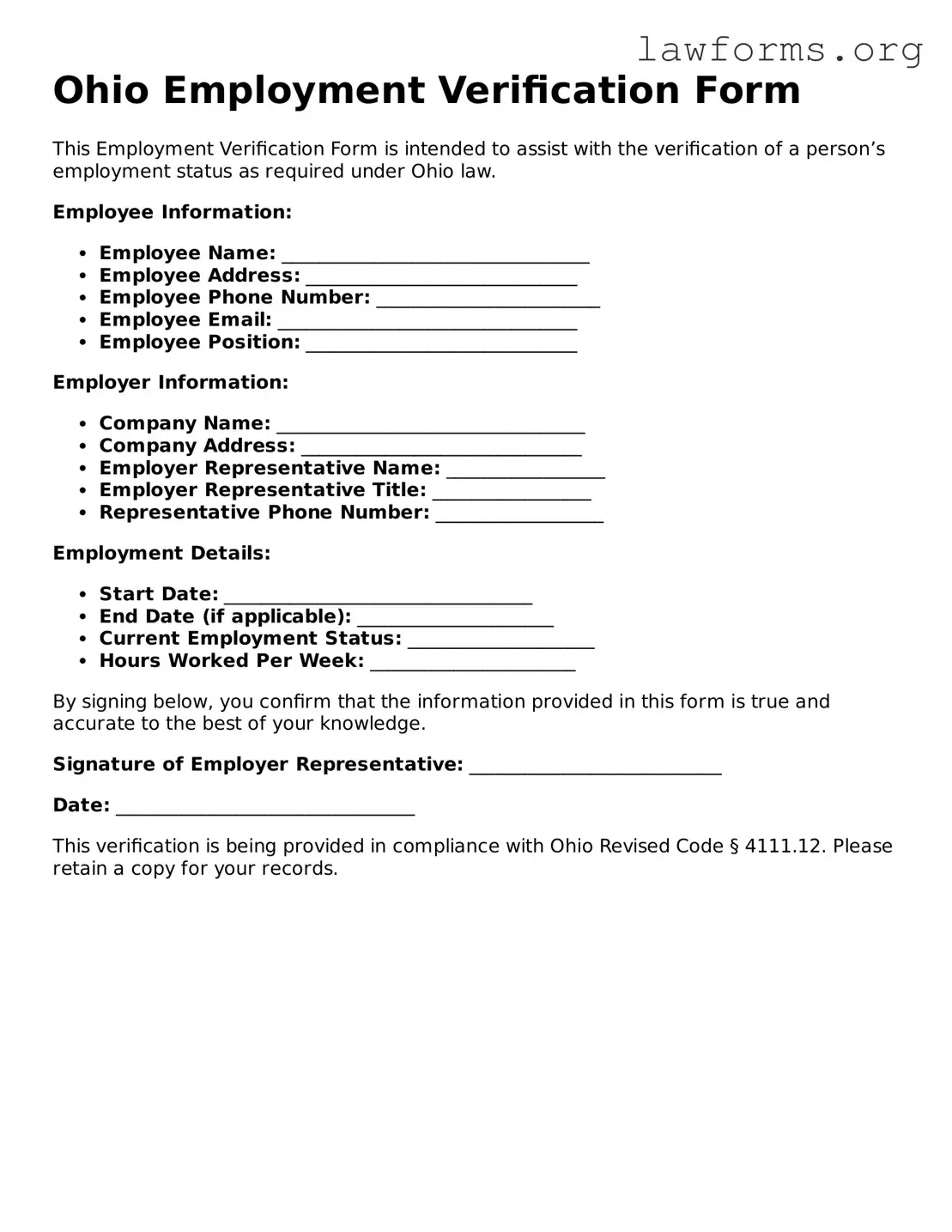Attorney-Approved Employment Verification Template for the State of Ohio
The Ohio Employment Verification form serves as an official document that confirms an individual's employment status and details. This form is crucial for various purposes, including loan applications, background checks, and other instances where proof of employment is required. Understanding how to properly fill out this form can streamline processes and ensure compliance with state regulations.
Ready to complete your Ohio Employment Verification form? Click the button below to get started!
Customize Document Online
